Samaaro + Your CRM: Zero Integration Fee for Annual Sign-Ups Until 30 June, 2025
- 00Days
- 00Hrs
- 00Min
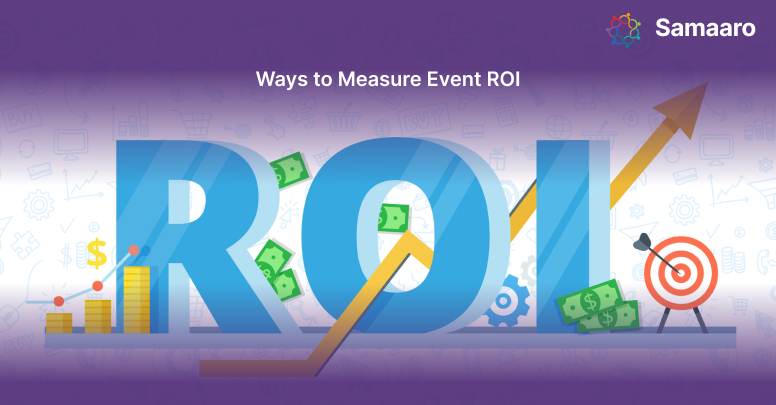
With the event landscape rapidly changing, the process of measuring Event ROI has become a transformational process that will ultimately shape the future of event planning and marketing. From a data-driven investment climate, measuring success has never been more critical. This preface will not only introduce the changing landscape of the event industry, but also demonstrate, and enumerate, the implications of measuring ROI.
In recent years, the event industry has undergone a broad transformation. Events have transitioned from, temporally, stand-alone events, to a strategic marketing channel, fostering engagement, building brand loyalty, and cultivating revenue. As is often the case with transformation, there has been a shift in expectations, competition, and the pressure of quantifying the impact of every event.
In this article, we will discuss concrete strategies, and metrics, that you can use in the ever-changing landscape of events, so you can strategically plan and execute your events systematically and effectively as possible, to generate a solid return on your event investment. Let us now explore the process of ROI measurement in the event lifecycle and share the tools and methods that today’s event professionals are using to maximize results.
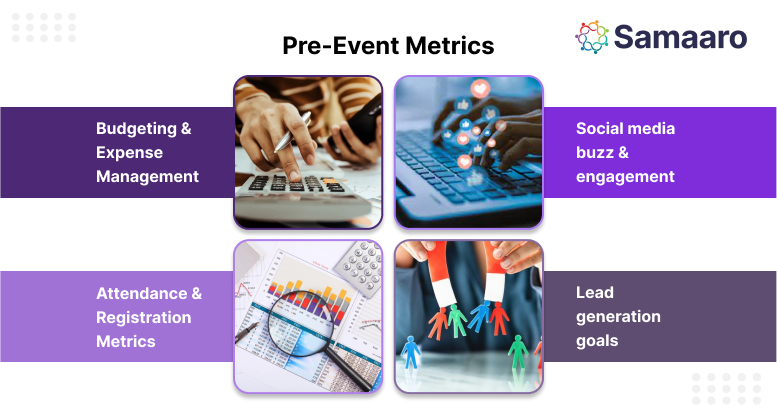
Before you set foot into the venue to start your event, there are several important indicators you can measure to prepare yourself for a successful ROI measurement.
Budget and Expenditure
Budgeting is typically the first stage in event planning. Budgeting, tracking and managing the budget will help inform the ROI. Start with your budget, categorize it, and record all your event’s expenditures to be as strict as you can with your expenses. This helps with discipline and provides a more efficient way of allocating resources. Attendance and registration indicators
The analytics behind the number of registrations and intended attendance are key pre-event indicators. This baseline data can help you understand whether your marketing efforts were successful. How does the number of registrations compare to your targets? Are there adjustments to the marketing approach you will take?
Social media engagement and buzz
In the world of social media, it is hard to dispute its effectiveness in sparking conversations and interest around your event. Several social media metrics need monitored including likes, shares, comments, post impressions, and new followers. All of them can help gauge the excitement and frenzy you are generating around your event.
Lead generation targets
It is no wonder that lead generation is usually the event’s key driver. Create quantifiable objectives around lead generation and have the metrics available to qualify it. While we are not interested in the numbers of already created prospects in advance of the event, these numbers can still provide an understanding of the potential influence the event can have on the sales funnel.
As the event is now in motion utilize metrics indicating real-time experience, and participation.
Attendee Participation
During the event, it is also important to track engagement of attendees. This might include looking at session attendance, workshop or interactive activity participation, and networking. You can track with various mechanisms to evaluate what your event generated with interest and participation.
Audience feedback and surveys
The audience feedback and opinion from event attendees also provide another opportunity for valuable insight. Real-time surveys can help you discover opportunities for improvement and take immediate action to enhance the experience at your event.
Real Time Social Media Monitoring
Monitoring social media during the event is important to understand real-time reactions, sentiment and the overall impact of the event. Tackling issues and trends as they occur can help you manage negative publicity as well as reinforce positive experiences.
Technology and Tools for Data Collection
When an event is underway, modern event management technology will help you collect data in a timely fashion. Using event management tools like Samaaro will add incredible value to your ability to collect and analyze data as it is created.
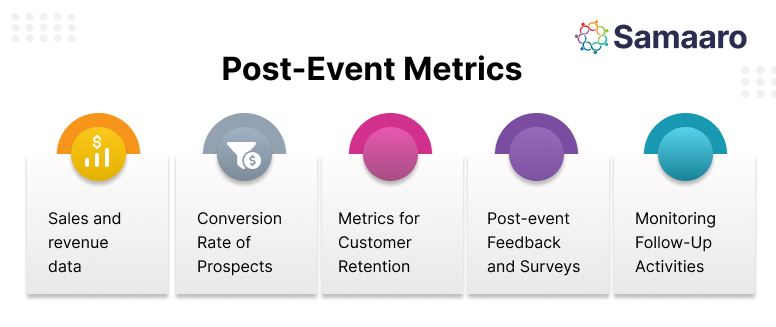
Looking at metrics from the post-event phase will give you a better insight into the impact of the event, and how to evaluate the ROI of the event.
Sales and Revenue Data
Looking at revenue and sales data will help you understand the financial viability of the event. This can include ticket sales, merchandise sales, and dollars spent after the event.
Conversion Rate of Prospects
The conversion rate of leads is the percentage of leads from your event that converted into customers. This is an important metric for any event, but it is especially important if one of your main goals was to generate leads. To calculate the conversion rate, divide the number of converted leads by the total number of leads.
Metrics for Customer Retention
Successful events not only deliver new customers, but they also provide memorable experiences for existing customers. Once the event has ended, you should continue measuring customer retention successfully – by tracking repeat attendance and noticing increased engagement with your brand or your product.
Post-event feedback & surveys
Post-attendance feedback and surveys are a serious need when it comes to gathering valuable insight about an attendee’s overall satisfaction and any areas which could be revisited for improvement.
Monitoring follow-up
Often success with an event hinge on what happens after the event. Follow up events (meetings for examples sales meetings, demos, etc.) will need to be monitored to assess the success of the follow-up process and subsequent lead development campaign.
Samaaro is a powerful event management platform that has many resources to assist with the calculation of Event ROI and the management of the entire event. It offers a way to collect, analyse and report data and integrates your CRM and marketing tech stack and analytics to simplify data retrieval and reporting, which in the end, provides event hosts a broader scope of knowledge and potentially optimal recommendations for future events.
Samaaro’s lead tracking tool allows you to register and manage leads, from the initial point of contact to the ultimate post-event follow-up point. This creates a complete picture of your attendee’s journey and makes it easier for your sales team to prioritize the leads that have the greatest potential.
In addition, Samaaro’s marketing tools assist with engaging attendees and potential leads prior to your event, during the event, and for a follow-up after the event. Tools for automated email campaigns, social media, and personalized emails can help increase the efficiency and engagement of your event.
Samaaro’s analytical tools should be a key component for every event organizer. With the ability to report on real-time data reporting and visualization, they can keep on top of the progress of their event and decide in the moment what was working and what was not (session by session, activity by activity, marketing strategy by marketing strategy). With the use of real-time data, the event organizer can make findings and changes in moments that could otherwise take months to evaluate and revisit for the credence of it’s customer base.
Event organizers and marketers must report on Event ROI. By focusing on the pre-event, during-event and post-event metrics, as well as using event technology such as Samaaro, it is possible to maximize their event ROI, their event success, improve their strategy and create a greater conversation with impact on their organizational bottom line.

Built for modern marketing teams, Samaaro’s AI-powered event-tech platform helps you run events more efficiently, reduce manual work, engage attendees, capture qualified leads and gain real-time visibility into your events’ performance.
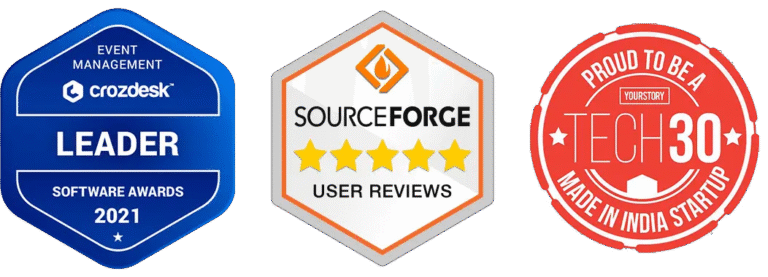
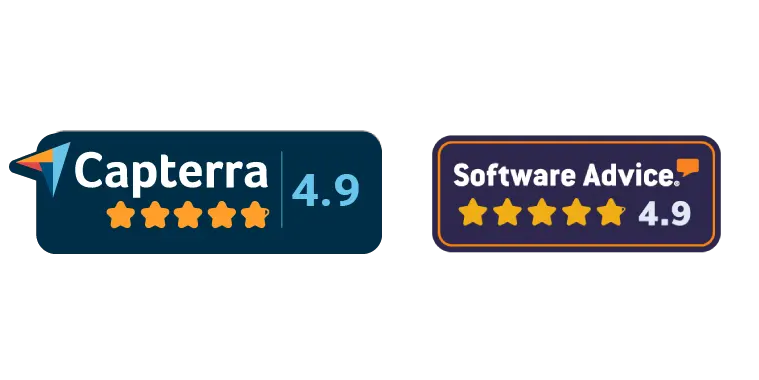
© 2025 — Samaaro. All Rights Reserved.